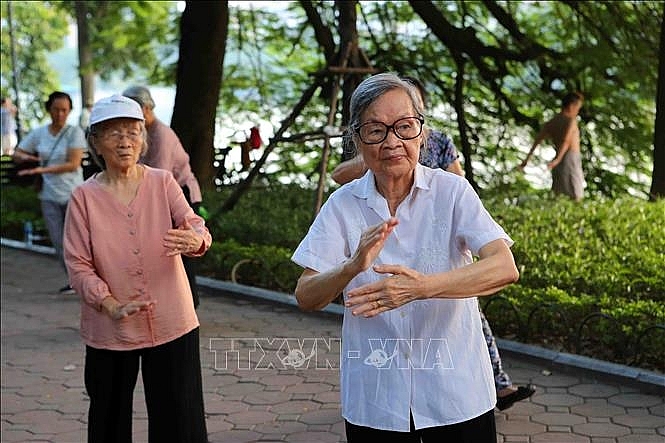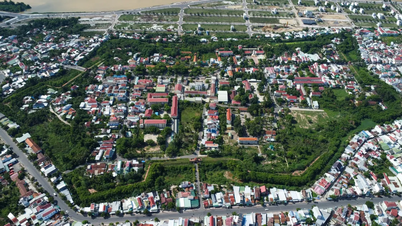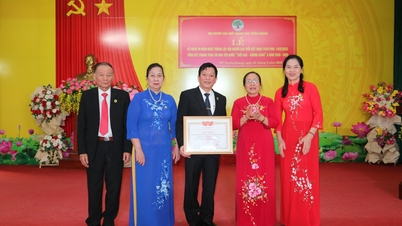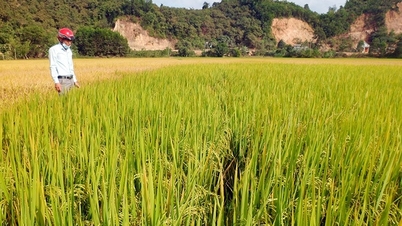 |
| Elderly people do health exercises in Hoan Kiem Lake area ( Hanoi ). Illustration photo: Thanh Dat/VNA |
Population aging, especially in developing economies like Vietnam, is creating new pressures and challenges, and population and development work also needs to be flexible and adaptable as there are only 15 years left to prepare.
Risk of labor shortage
According to statistics, in 2023, Vietnam's population will be about 100.3 million people, with more than 16 million elderly people. The Ministry of Health forecasts that by 2038, Vietnam will enter the period of aging population, transitioning from an "aging" society to an "aged" society, with more than 21 million elderly people, accounting for nearly 20% of the total population. It is worth noting that the transition from aging population to old population in Vietnam is only over 20 years, while developed countries take longer, even nearly a century.
The average life expectancy of Vietnamese people has increased from 68.6 years (1999) to 73.2 years (2014), gradually increasing to 74.5 years (2019), forecast to increase to 78 years (2030) and reach 80.4 years (2050). From 2009 to 2021, our aging index has increased from 35.5 to 53.1.
In the 70s and 80s of the last century, Vietnamese women gave birth to many children and more than the necessary replacement rate (5-6 children/woman). However, this trend has been decreasing and was at its lowest in 2005. Up to now, although the average birth rate has improved, it has not yet reached the necessary birth rate of 2.1 children/woman. Many experts have stated that more and more young people in Vietnam think that in the current conditions, getting married and having children is inconvenient, troublesome and unnecessary. From there, experts have suggested that the authorities need to develop messages and communication materials on population and development policies to widely disseminate in the current situation.
According to experts: A direct consequence of the aging population in Vietnam is the risk of labor shortage. With an increasingly aging population and a decreasing number of young workers, labor shortages are becoming an increasingly worrying issue. Industries and services will have difficulty finding enough human resources to maintain and develop, which can lead to a decrease in labor productivity, reduced competitiveness, and negative impacts on economic growth.
Chairman of the Vietnam Association of the Elderly Nguyen Thanh Binh informed: The rate of elderly people participating in work has been increasing over the past 20 years. In 1999, 19.40% of elderly women and 35% of elderly men were working, but by 2020, the figures had increased to 38% and 46.1%. In the period 2010 - 2020, the number of elderly workers increased by an average of 160,000 people per year, equivalent to 4%/year, twice as high as the overall employment growth rate of the whole country.
In addition, population aging also poses challenges to the health care and social welfare systems. With the proportion of elderly people increasing, it is clear that the State needs to have appropriate policies and infrastructure to ensure that the elderly receive the best care.
Appropriate policies are needed.
Recognizing the inevitable trend of population aging, for many years, the Party and the State have always paid attention to building guidelines, policies, especially the social assistance system, to effectively respond. Specifically, the State has a policy to support the elderly in borrowing preferential loans for production and business (Circular No. 96/2018/TT-BTC). The elderly can borrow preferential credit from two sources of capital through the Social Policy Bank and the National Employment Fund to invest in economic development, create jobs, and improve their lives.
Currently, Vietnam has about 3.1 million elderly people receiving monthly pensions and social insurance benefits. The larger the number of elderly people without pensions, the more pressure is placed on the social security system. The increasing number of retirees and pension periods requires the formation of a long-term pension system that is sufficient for living, which is becoming a pressure on developed and developing countries. Therefore, the problem is to create all conditions to extend the working time of the elderly, contributing to sustainable socio-economic development, adapting to the trend of population aging.
Associate Professor, Dr. Ta Minh Tuan, Vice President of the Vietnam Academy of Social Sciences, affirmed that we need to view population aging not only as a risk but also as an approach that will bring significant opportunities for sustainable development associated with the active participation of the elderly. With experience, knowledge, skills and financial resources, the elderly can absolutely become important agents and resources in the community to actively contribute to the development of the economy - society, family and community.
In addition, we also need to form policies to encourage women to have children, promote women's participation in the workforce, invest in education and training to develop human resources, create favorable conditions for businesses to attract and retain young workers. Along with that, the use of technology and automation in industries is also a solution. By increasing automation, Vietnam can reduce dependence on direct labor, increase labor productivity, and help balance human resources in industry and services.
Deputy Director of the Department of Population (Ministry of Health) Pham Vu Hoang said that population aging brings both opportunities and challenges. In terms of opportunities, population aging can promote the development of areas such as insurance, banking, nutrition, tourism, technological innovation and the application of science and technology in production or management in the context of labor shortage.
In the context of population aging and the risk of labor shortage, Vietnam needs to be proactive and creative in finding effective solutions. In addition, Vietnam also needs to refer to the experience of countries that have responded to population aging to develop appropriate and practical policies to enhance autonomy and independence, especially financial independence for the elderly, while creating opportunities and capacity for them to fully participate in the social security, insurance and health care systems, ensuring the rights of the elderly to achieve "successful aging". It can be said that by flexibly implementing policies and creating favorable conditions for the elderly to participate in economic and social development, Vietnam can overcome challenges and prepare the best conditions to enter the period of population aging.
Source: https://baotintuc.vn/xa-hoi/chuan-bi-buoc-vao-thoi-ky-gia-hoa-dan-so-tu-nam-2038-20240321112236889.htm
Source



![[Photo] Vietnamese and Hungarian leaders attend the opening of the exhibition by photographer Bozoky Dezso](https://vphoto.vietnam.vn/thumb/1200x675/vietnam/resource/IMAGE/2025/5/29/94d8ceca5db14af3bf31285551ae4bb3)



![[Photo] Prime Minister Pham Minh Chinh receives a bipartisan delegation of US House of Representatives](https://vphoto.vietnam.vn/thumb/1200x675/vietnam/resource/IMAGE/2025/5/28/468e61546b664d3f98dc75f6a3c2c880)





















![[Photo] 12th grade students say goodbye at the closing ceremony, preparing to embark on a new journey](https://vphoto.vietnam.vn/thumb/1200x675/vietnam/resource/IMAGE/2025/5/28/42ac3d300d214e7b8db4a03feeed3f6a)































































Comment (0)